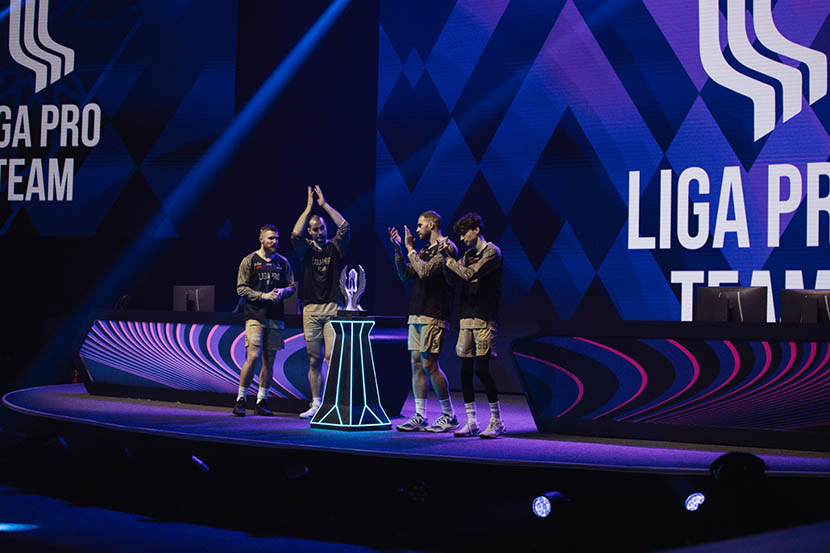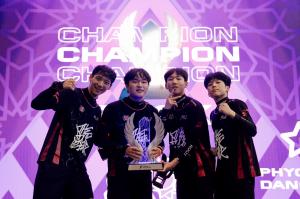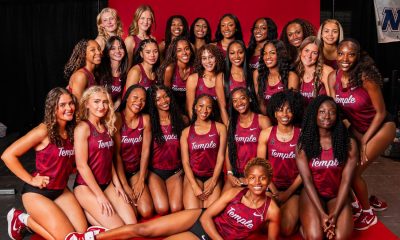Technology
Runway AI Levels Up: From Hollywood to Gaming!

Game On with AI: Runway’s Bold New Move
Last updated:

Edited By
Mackenzie Ferguson
AI Tools Researcher & Implementation Consultant
Runway AI, renowned for its cutting-edge video generation tools in Tinseltown, is diving into the gaming industry with an AI-powered consumer product launch scheduled for next week. The offering will initially include text and image generation, with video game creation capabilities slated for 2025. CEO Cristóbal Valenzuela is optimistic that this innovation will transform gaming development—just as it did in movies—by speeding up processes and improving creative output.
Introduction to Runway AI’s Expansion
Runway AI is poised for a momentous step forward as it announces its expansion into the gaming industry, building on its renowned success in the realm of Hollywood video generation. The company, celebrated for its state-of-the-art AI tools that have become a staple in film production, is now setting its sights on revolutionizing game development. This strategic move is marked by the upcoming launch of a pioneering consumer product designed to integrate AI in the form of text and image generation, with plans for full-fledged video game capabilities on the horizon for 2025. As Runway AI embarks on this new venture, its CEO, Cristóbal Valenzuela, envisions a transformative impact akin to the advancements witnessed in film production, where AI has significantly expedited development processes and enhanced creative outputs .
Background: Runway AI’s Achievements
Runway AI has firmly established itself at the forefront of the artificial intelligence industry with its innovative video generation tools, gaining prominence in the entertainment sector, particularly in Hollywood. Known for its cutting-edge technology, Runway has now set its sights on the gaming industry, aiming to replicate the impact it had on filmmaking by accelerating game development. According to The Verge, the company is launching a new consumer product that will initially feature text and image generation capabilities, with plans to include full-fledged AI-generated video games by 2025.
The gaming industry is eagerly anticipating the potential transformations that Runway AI’s technologies can deliver. By integrating its AI tools into game development, Runway aims to streamline the creative process, potentially cutting development times by up to 40%. Discussions are already underway with major gaming companies to explore opportunities for collaboration and innovation. The company believes that these advancements will not only enhance efficiency but also open up new realms of possibility for game design and storytelling.
Runway’s expansion into the gaming sector reflects a broader trend of AI’s growing role in various industries. As technologies become production-ready, the potential to revolutionize traditional workflows becomes increasingly apparent. Besides accelerating development, AI is expected to deliver more immersive and personalized gaming experiences, enhancing gameplay and supporting new business models. The implications of AI in the gaming industry are vast, with potential to redefine how games are developed, played, and monetized, as discussed in reports by Hartmann Capital.
While the excitement around AI in the gaming sector is palpable, it’s not without its challenges and controversies. Public reactions are divided, with many hopeful about the efficiency and creativity that AI can bring to game development, but others remain skeptical about Runway AI’s ability to deliver on such ambitious projects. Concerns include the possibility of creative homogenization and job displacement. Nonetheless, the potential economic and social benefits, such as lower development costs and enriched gaming narratives, continue to drive interest in the collaborative potential between AI and human creativity, as noted in DigitrendZ.
At the helm of this ambitious pivot is Runway AI’s CEO, Cristóbal Valenzuela, who envisions a future where the barriers between reality and virtual worlds blur, thanks to AI’s capabilities. Drawing parallels with AI adoption in the film industry, Valenzuela is optimistic about similar success in gaming. His commitment to keeping Runway independent reflects a desire for intellectual freedom and technological integrity. This strategic choice not only emphasizes Runway’s commitment to innovation but also positions it uniquely within the competitive landscape of AI technology firms, as reported by The Verge.
Runway AI’s New Product for Gaming Industry
Runway AI is poised for a transformative impact on the gaming industry with the launch of its new product designed for gamers. Known for its pioneering AI-powered video generation tools widely utilized by Hollywood studios, Runway AI is now extending its technological prowess into the realm of gaming. Scheduled for launch next week, the consumer product will initially offer features like text and image generation specifically tailored for gaming. Furthermore, the company has ambitious plans to introduce video game generation capabilities by the end of 2025 ().
Runway AI’s entry into the gaming sector signifies a strategic move to integrate its advanced AI technologies with popular gaming platforms. The company is actively engaging with major gaming companies to incorporate its technology and data insights, believing that their AI solutions can significantly accelerate the development process, much like their success in the film industry. CEO Cristóbal Valenzuela has expressed that AI could cut game development times by as much as 40%, fostering more dynamic and efficient development cycles. This aligns with the broader industry trend where AI is increasingly becoming a cornerstone of game development and design ().
The launch is not without its challenges, as Runway AI navigates a complex landscape of intellectual property rights and the rapid pace of technological advancement. While there have been talks with major players like Meta, Runway has opted to maintain its independence to pursue innovative pursuits driven by intellectual curiosity rather than corporate integration (). This decision echoes the company’s commitment to leveraging its AI capabilities to redefine game development paradigms, potentially leading to more personalized and immersive gaming experiences. However, there are concerns about the balance between innovation and the creative traditions of game design, highlighting the importance of carefully evolving alongside technological advancements.
Impact of AI in Gaming – An Overview
The advent of artificial intelligence in the gaming industry marks a transformative era characterized by unprecedented creativity and efficiency. A key player in this evolution is Runway AI, renowned for its advanced AI video generation technologies that have already made significant impacts in Hollywood. Now, Runway is venturing into gaming with plans to launch consumer products that initially feature text and image generation. This new initiative is part of a broader strategic pivot aimed at revolutionizing how games are developed and experienced (source).
Runway AI’s upcoming ventures into gaming are set to challenge traditional development paradigms. With their tools designed to streamline workflows and reduce production times, gaming companies can expect to see enhancements in both the creation and design processes. The potential for AI to accelerate game development—emulating its success in the film industry—offers a promising future for developers who are eager to adopt these cutting-edge technologies. Runway’s CEO, Cristóbal Valenzuela, envisions AI acting as a catalyst for sweeping changes, accelerating the pace of development while maintaining the creative integrity of game design (source).
The implications of AI-driven game development are extensive, with Runway AI poised to disrupt traditional industry models. While the potential for creating immersive, dynamic gaming experiences is highly promising, there are valid concerns regarding job displacement for current industry professionals as AI technologies automate routine tasks. However, the efficiency gains could lower barriers to entry for smaller studios, fostering an environment of increased creativity and innovation across the gaming landscape (source).
AI’s role in gaming also presents a range of socio-economic and political considerations that need to be addressed. As AI becomes more integrated into game development, issues surrounding intellectual property rights, creative ownership, and ethical content creation come to the forefront. Runway’s expansion into this domain will likely ignite discussions around these topics, as well as the broader implications of AI in media and entertainment (source).
Future of AI-Driven Video Game Generation
The advancement of AI-driven video game generation is proving to be a groundbreaking force within the gaming industry, as organizations like Runway AI embark on transforming how games are conceived and developed. Renowned for their AI video generation capabilities in Hollywood, Runway is now venturing into gaming by launching a consumer-targeted product next week. This product will initially focus on text and image generation, with plans to expand into full video game generation by the end of 2025. Their innovative approach is not only a testament to the versatility of AI but also highlights a trend where the boundaries between creative industries are becoming increasingly blurred. This initiative could pave the way for creating highly immersive, personalized gaming experiences where the narratives and environments adapt in real-time, offering players dynamics that were previously unattainable with traditional game development methods ().
Runway’s CEO, Cristóbal Valenzuela, suggests that the adoption of AI in gaming can significantly accelerate game development, reducing the time and resources needed to bring new games to market. Drawing comparisons with AI’s successful integration in film production, Valenzuela envisions similar technological advances in gaming. This could revolutionize the industry by streamlining development processes and allowing for more complex and expansive virtual worlds. Furthermore, by staying independent, Runway aims to explore untapped intellectual territories without the constraints of larger corporate entities, positioning themselves as pioneers in AI-augmented game creation ().
The future of AI-driven video game generation also raises intriguing prospects for collaborations between AI developers and gaming companies. Runway’s ongoing discussions with various gaming firms reflect a burgeoning interest in integrating AI technologies into game development pipelines. This partnership could potentially democratize game development, enabling indie developers to leverage the same AI tools used by larger studios, thereby fostering a more diverse gaming ecosystem. However, these developments also pose questions about job displacement, as AI capabilities might reduce the need for certain roles traditionally involved in game development ().
Despite the excitement around AI’s potential to transform gaming, there are concerns. Critics argue that AI could lead to a homogenization of games if developers rely too heavily on AI-generated templates. Moreover, as AI begins to handle more creative tasks, questions about originality and creative ownership arise, alongside ethical considerations regarding bias and data use in AI training. Legal challenges, particularly around intellectual property rights, are likely to emerge, requiring updates to current laws to accommodate AI-created works ().
Public reception of AI in gaming is mixed. While some embrace the potential for innovation and efficiency, others are skeptical of lofty promises and cautious about how AI might alter the fabric of game creation and player experience. The market’s response will largely determine the trajectory of these technologies, as consumers weigh the allure of new gaming experiences against the possible loss of the human touch in game design. Regardless of the varying opinions, there’s no denying that AI is on the cusp of becoming an integral part of the gaming industry’s evolution, promising a future where digital entertainment continuously adapts to player preferences and societal trends ().
Challenges and Opportunities in AI Game Development
The integration of artificial intelligence in game development presents a landscape of both challenges and opportunities. Runway AI’s foray into this sector highlights the transformative potential of AI, as its tools, previously utilized by Hollywood studios, are now being adapted for gaming. This expansion is expected to introduce innovative approaches to game creation, allowing for accelerated development timelines and enhancing creative possibilities. As Runway prepares to launch its AI-driven gaming products, starting with text and image generation features, the company is positioned to offer significant contributions to the way games are developed (https://www.theverge.com/ai-artificial-intelligence/694531/runway-ai-video-games-generate).
However, the path to integrating AI into game development is fraught with challenges. A primary concern is the potential displacement of artists and designers, as AI tools automate tasks traditionally performed by humans. The industry’s ability to adapt to these changes will be crucial in addressing these economic and social concerns. This adaptation might result in more accessible development processes for smaller studios, reducing costs and fostering creativity, but it also risks creating a homogenized creative output if not balanced properly (https://www.theverge.com/ai-artificial-intelligence/694531/runway-ai-video-games-generate).
Another challenge is ensuring the authenticity and ethical integrity of AI-generated content. Issues of algorithmic bias and the ownership of AI-created work raise questions that the industry must address to maintain credibility. Additionally, intellectual property rights may require reevaluation, as the integration of AI-generated content risks blurring the lines of traditional copyright protection. Runway’s experience with legal challenges related to copyrighted material used in AI training illustrates these complications (https://www.theverge.com/ai-artificial-intelligence/694531/runway-ai-video-games-generate).
Opportunities abound as well. AI has the potential to personalize gaming experiences, making them more immersive and dynamic. By integrating AI models into game engines, developers can craft more responsive and adaptable gaming environments. Runway AI’s innovative tools offer the promise of revolutionizing the gaming sector by significantly improving efficiency and creativity. This ambition aligns with CEO Cristóbal Valenzuela’s vision, as he anticipates that AI will rapidly accelerate game development, much like its impact on film production (https://www.theverge.com/ai-artificial-intelligence/694531/runway-ai-video-games-generate).
Lastly, the industry must navigate the political implications of AI in gaming. With the concentration of technological power in a few companies, antitrust concerns could arise, alongside potential misuse of AI technologies for purposes like deepfakes or misinformation. As Runway AI continues its expansion, the development of new legal frameworks to oversee and manage these emerging challenges and impacts will be critical in ensuring a balanced and fair gaming ecosystem (https://www.theverge.com/ai-artificial-intelligence/694531/runway-ai-video-games-generate).
Runway AI’s Vision and Industry Impact
Runway AI is poised to redefine the gaming industry with its innovative applications of artificial intelligence. Known for its prowess in AI video generation, particularly within Hollywood, Runway AI is now venturing into the gaming sector with the launch of a new consumer product. This product will initially focus on text and image generation, with plans to expand into video game generation by 2025. The integration of AI in gaming promises to revolutionize game development by significantly accelerating the process, akin to its transformative impact on film production. With discussions already underway with leading gaming companies, Runway AI is eager to deploy its technology to enhance gaming experiences, foster creativity, and streamline production timelines .
The potential impact of Runway AI’s entry into gaming extends well beyond mere technological advancement. CEO Cristóbal Valenzuela predicts that AI will speed up the development cycle by up to 40%. This could democratize game development by reducing the cost and time barriers for smaller studios, thereby enabling a more diverse range of games in the market. However, this shift is not without its challenges, as concerns over job displacement for artists and designers and the creative limits of automated tasks loom large. Runway’s determination to remain independent—a choice highlighted by its rebuffed acquisition talks with Meta—underscores its commitment to pioneering unique intellectual challenges .
The societal implications of Runway AI’s innovations are equally significant. As AI becomes a staple in game development, the potential for creating more immersive, personalized experiences arises. Content that adapts dynamically to the player could redefine what it means to engage with a video game, though this also raises critical questions about the authenticity and ownership of such content. The emergence of such technology necessitates careful consideration of ethical issues, particularly in terms of algorithmic bias, which could affect representation and fairness in AI-generated narratives .
Politically, Runway’s foray into gaming technology brings its own set of challenges. Intellectual property rights could become a contentious arena, especially considering Runway’s previous legal battles over copyrighted material used in AI training. The nature of AI-generated content challenges traditional understandings of copyright, potentially requiring a reevaluation of existing legal frameworks. Additionally, the expansion of AI technology into gaming raises concerns over the concentration of power. The dominance of a few major players in the AI space, including the potential for misuse like deepfakes, emphasizes the need for regulatory oversight to ensure ethical standards and competition are maintained .
Public Reactions and Diverse Opinions
The public’s reaction to Runway AI’s entry into the gaming industry is decidedly multifaceted. On one hand, there’s a wave of positive sentiment among gaming enthusiasts and developers who are optimistic about how AI might revolutionize game development processes. This group envisions a future where AI-driven tools streamline workflows, significantly reducing production time while enhancing the creative capabilities of developers. The excitement is palpable among those who believe AI can accelerate innovation, allowing developers to tackle more ambitious projects and achieve results more swiftly than ever before. Publications like DigitrendZ highlight such optimism, suggesting that AI’s transformative potential could signify a new era of gaming development.
However, not all reactions are filled with enthusiasm. A segment of the public expresses skepticism, questioning whether Runway AI can deliver on its ambitious promises. Some perceive the company’s foray into gaming as a case of being ‘late to the game,’ raising doubts about its ability to compete with established players already utilizing AI technologies. Concerns are also voiced regarding Runway’s attention—or lack thereof—to user feedback, as well as the perceived limited scope of the initial products being offered. These sentiments are echoed in discussions on platforms like Reddit, indicating a mixture of excitement and wariness within the community.
The Broader Economic and Social Implications
The expansion of Runway AI into the gaming industry highlights its potential to significantly alter both economic and social landscapes. By lowering development costs and reducing timelines, Runway’s AI tools could democratize access to game development. This, in turn, may enable smaller studios to compete with established industry giants by producing innovative and high-quality games at a fraction of the cost . However, this technological shift also points to possible job displacement for artists and designers, raising concerns about employment sustainability and creative industry evolution .
Socially, the integration of AI in gaming could lead to enriched player experiences through personalized content and dynamically evolving game narratives. This potential for immersive storytelling using AI-driven customization offers gamers more engagement and replayability . However, questions arise concerning the authenticity of these experiences, especially when AI systems generate content autonomously. Moreover, ethical issues regarding algorithmic bias could lead to unfair or unbalanced gameplay, challenging developers to address inclusivity and fairness in AI-driven environments .
Politically, Runway’s technological expansion into gaming suggests a re-examination of intellectual property rights as AI-generated content becomes more prevalent. With previous legal battles over copyrighted material used in AI training, the future of AI in gaming might demand new legal frameworks to define ownership and rights . In addition, the growing influence of companies like Runway could prompt antitrust scrutiny, especially as AI capabilities could be misused for creating deepfakes or spreading misinformation. The combination of these factors suggests that substantial legal and political discourse will be necessary to govern the future of AI in the creative industries .
Legal and Political Considerations of AI in Gaming
The intersection of artificial intelligence (AI) and gaming is not merely a matter of technical advancement but also a complex arena of legal and political challenges. As AI technologies like those developed by Runway AI advance into the gaming industry, key legal concerns revolve around intellectual property rights. With AI’s growing ability to generate content, often learned from vast datasets, questions arise about the ownership of generated outputs and the potential misuse of copyrighted material during AI training. This was evidenced by past legal challenges faced by Runway, highlighting the need for new legal frameworks to address these novel challenges. As gaming companies and AI developers navigate these legal waters, robust agreements and careful considerations regarding data usage and intellectual property will become paramount to ensure innovation is legally sound [1](https://www.theverge.com/ai-artificial-intelligence/694531/runway-ai-video-games-generate).
Politically, the move of AI into gaming is poised to impact regulatory landscapes significantly. The concentration of power in tech giants like Runway hints at possible antitrust issues, especially as these companies become pivotal in shaping future media landscapes. Moreover, the potential for AI misuse in gaming, whether through creating deepfakes or spreading misinformation, calls for careful monitoring and regulation to protect consumers and maintain fair industry practices. As AI reshapes the digital entertainment sector, policymakers will need to establish clear guidelines that balance innovation with public interest and security. This regulatory environment will likely evolve as AI becomes more entrenched in gaming markets [1](https://www.theverge.com/ai-artificial-intelligence/694531/runway-ai-video-games-generate).
The impact of AI on the gaming industry extends beyond legal frameworks, touching on broader societal concerns about job displacement and cultural homogenization. As AI automates parts of game development traditionally reserved for artists and designers, there are fears about job losses in these creative fields. However, proponents argue that AI can serve as a tool for enhancing creative productivity, enabling developers to craft more intricate and engaging gaming experiences. These shifts may require companies to rethink workforce strategies, potentially focusing on retraining and upskilling to adapt to an AI-enhanced development landscape [1](https://www.theverge.com/ai-artificial-intelligence/694531/runway-ai-video-games-generate).
Discussion surrounding AI in gaming also encompasses social considerations about authenticity and creative ownership. The capability of AI to personalize gaming experiences introduces ethical questions about ownership and the authenticity of algorithmically-generated narratives. As AI starts to weave more dynamic and personalized stories within games, the distinction between human and machine creativity may blur, challenging our traditional notions of authorship. Addressing these philosophical questions will be essential in securing the societal acceptance of AI-enhanced gaming [1](https://www.theverge.com/ai-artificial-intelligence/694531/runway-ai-video-games-generate).
The legal and political landscape concerning AI in gaming is as dynamic as the technology itself. The initial excitement surrounding AI offers vast opportunities but also calls for scrutiny and deliberation regarding its broader impacts. As developers and policymakers engage with these emerging legal and political challenges, their efforts will be critical in shaping a future where AI technologies enrich, rather than undermine, the gaming industry [1](https://www.theverge.com/ai-artificial-intelligence/694531/runway-ai-video-games-generate).
Technology
Games of the Future Abu Dhabi 2025 Rewrites the Playbook for Sports with Phygital Innovation
Published on
December 25, 2025
By: Tuhin Sarkar

The Games of the Future Abu Dhabi 2025 have closed an unforgettable chapter in the evolution of phygital sports. Hosted under the patronage of His Highness Sheikh Mohamed bin Zayed Al Nahyan, President of the UAE, the event marked an unparalleled fusion of physical and digital competition. Over six action-packed days, Abu Dhabi hosted more than 850 participants from 60+ countries, with fierce battles across 11 disciplines including Phygital Football, Phygital Basketball, esports, Phygital Fighting, drone racing, and VR gaming.
Games of the Future Abu Dhabi 2025 was not just a sporting event; it was a vision of the future. It set a global standard for what sports can look like in the digital age, where technology and human skill come together to create immersive and multi-dimensional experiences. The competition showed the world that the future of sports isn’t confined to a physical arena, but seamlessly integrates both the physical and digital.
The Champions of Tomorrow: Phygital Sports Takes Centre Stage
The Games of the Future Abu Dhabi 2025 featured 11 disciplines that blended traditional sports with futuristic technologies, including Phygital Football, Phygital Basketball, esports, Phygital Fighting, and Phygital Shooter. These unique formats tested competitors in both the physical and digital realms. For example, Phygital Football powered by ADNOC saw the México Quetzales – Armadillos FC clinch the Phygital Football title, defeating Troncos FC 2-4 in a thrilling final that captivated crowds throughout the week. Likewise, in Phygital Basketball, the LIGA PRO TEAM triumphed in a 29-23 victory over Moscowsky.
Other high-stakes competitions included Phygital Fighting.FATAL FURY: City of the Wolves, where Kuznya dominated, winning all four of their matches. Meanwhile, xGoat emerged victorious in the Phygital Shooter.CS 2 final, overcoming Dontsu Esports 2-0 in an intense digital shootout.
In the drone racing category, Drone Racing One wowed spectators by completing 50 laps of a challenging circuit, showcasing the high-tech thrill of phygital racing.
A Digital Revolution: The Rise of VR Gaming and Esports
Beyond traditional sports, Games of the Future Abu Dhabi 2025 brought esports and VR gaming into the spotlight. The esports events featured top teams and intense matches across a variety of games, including MOBA Mobile.MLBB and MOBA PC.Dota 2. In a thrilling final, ONIC defeated Aurora Gaming in the Mobile.MLBB championship, while teamWin overcame Vikings 2-0 in Dota 2.
The Battle Royale tournament, featuring Fortnite, saw Kami + Swizzy crush their opponents ZYRO + RAPID in the final. In VR gaming, the HADO competition proved to be one of the most exciting events, where Team Rock claimed the victory.
The digital revolution didn’t stop there—Phygital Dancing.Just Dance was an engaging crowd favorite, with Ivan “myakekcya” Vlasov taking home the crown. These events proved that esports and VR gaming are no longer just niche interests but are now integral parts of mainstream competition.
The Future is Phygital: Tech and Sport in Perfect Harmony
Games of the Future Abu Dhabi 2025 perfectly illustrated how technology and sports are converging to form an entirely new ecosystem. With events such as Phygital Football, Phygital Basketball, and drone racing, the Games were a showcase of the groundbreaking possibilities that arise when sports embrace digital innovations. Technology was not merely an accessory at this event—it was the cornerstone upon which the competitions were built.
With immersive experiences that brought together digital avatars, VR environments, and physical action, the event revealed a new way of experiencing and consuming sports. It also showcased how athletes and fans alike can now engage with sports in ways that were unimaginable just a decade ago.
Abu Dhabi Leads the Way: A Global Hub for Next-Generation Sports
As the host city, Abu Dhabi solidified its position as a global leader in the future of sports. This landmark event wasn’t just about showcasing phygital sports, but also about demonstrating the UAE’s commitment to innovation and technology. The event was a triumph of vision, execution, and global collaboration, bringing together athletes, clubs, and partners from around the world.
In his remarks, Saif Al Noaimi, CEO of Ethara, remarked on the complexity of delivering an event on such a grand scale: “Delivering an event of this scale and complexity required close coordination across multiple disciplines, venues, and partners. The Games of the Future Abu Dhabi 2025 showcased competitive excellence, but also operational innovation and audience engagement at the highest level.”
Similarly, Nis Hatt, CEO of Phygital International, praised the event’s impact: “What we saw over six days was not just competition, but the emergence of a global ecosystem where sport, esports, technology, and innovation coexist on one stage. Abu Dhabi set a new benchmark for scale, delivery, and ambition.”
A Glimpse into the Future: The Global Impact of Phygital Sports
The success of Games of the Future Abu Dhabi 2025 is not just about the event itself. It signals a transformative shift in how we view and experience sports in the 21st century. By embracing phygital sports, the UAE is not just shaping the future of competition, but also setting the stage for the next generation of athletes, fans, and sports industries.
The Phygital Sports Summit, which took place during the event, provided a platform for discussing the future of sports, technology, and innovation. The summit brought together industry leaders, athletes, and tech visionaries to discuss the convergence of physical and digital realms. The dialogue held here will help define the future trajectory of phygital sports and shape the policies that govern it.
Looking Ahead: The Future of Phygital Sports is Now
The Games of the Future Abu Dhabi 2025 wasn’t just a flash in the pan; it was a statement. The event demonstrated how sports and technology can work in harmony, paving the way for the next generation of competition. As Abu Dhabi continues to innovate and lead the way in phygital sports, the rest of the world is watching closely, eager to follow in the footsteps of this global hub for next-generation sports and entertainment.
As Stephane Timpano, CEO of ASPIRE, pointed out, “The success of this edition shows what is possible when vision, technology, and execution align.” The Games of the Future Abu Dhabi 2025 will undoubtedly serve as a springboard for even bigger, more ambitious events in the years to come, setting a new standard for what’s possible in the world of sports.

Technology
The Games of the Future Abu Dhabi 2025 Closes Landmark Edition, Setting New Benchmark for Phygital Sports


GOTF 1

Concludes GOTF.2

Concludes GOTF .3
ABU DHABI, UNITED ARAB EMIRATES, December 25, 2025 /EINPresswire.com/ — The Games of the Future Abu Dhabi 2025 powered by ADNOC concluded on Tuesday after six days of elite competition, innovation, and global participation, marking a milestone moment in the evolution of phygital sports.
Held under the patronage of His Highness Sheikh Mohamed bin Zayed Al Nahyan, President of the UAE, the landmark event brought together more than 850 participants from over 60 countries and featured 11 disciplines, spanning Phygital Football, Phygital Basketball, esports, Phygital Fighting, Phygital Shooter, Phygital drone racing, and VR Game.HADO. Across arenas, stages, and digital battlegrounds, the event showcased how technology and sport are converging to shape the future of competition.
During the globally-watched event, champions were crowned in each discipline, delivering their own defining moments and reinforcing the unique multi-sport identity of the Games of the Future.
Phygital Football powered by ADNOC and Phygital Basketball.3on3 FreeStyle brought to you by M42 both drew vocal crowds throughout the week, with MÉXICO QUETZALES – ARMADILLOS FC taking the Phygital Football title in a thrilling 2-4 final win over Troncos FC, and LIGA PRO TEAM secured the Phygital Basketball title with a 29-23 victory over Moscowsky. Meanwhile, in Phygital Fighting.FATAL FURY: City of the Wolves, Kuznya finished top of the leaderboard after winning all four of their fights, dominating both on the digital stage and in the octagon, and xGoat won the Phygital Shooter.CS 2 final, beating Dontsu Esports 2-0 in the digital world to avoid the need for a deciding round of physical laser tag.
Tasting glory in the esports-focused disciplines, ONIC won the MOBA Mobile.MLBB final against Aurora Gaming, while the aptly-named teamWin beat Vikings 2-0 in the championship game of MOBA PC.Dota 2, and Kami + Swizzy conquered ZYRO + RAPID in the final of the Battle Royale.Featuring Fortnite. In the Phygital Drone Racing presented by InsuranceMarket.ae, which tasked clubs to complete 50 laps of a testing circuit filled with loops, hoops, and straights, Drone Racing One proved fastest on the final day ahead of Team BDS.
A pair of events taking place in the Atrium at ADNEC Centre drew plenty of attention as Ivan “myakekcya” Vlasov triumphed in the Phygital Dancing.Just Dance final, while Team Rock took the title in VR-game.HADO. Lastly, in Battle of Robots, proving itself one of the most spectacular disciplines of the week, Fierce Roc’s menacing Deep Sea Shark machine annihilated Team Cobalt’s Cobalt in a spectacularly destructive finale.
In parallel with the competitive program, the event week also featured an eye-catching and engaging Opening Ceremony and the inaugural Phygital Sports Summit, reinforcing Abu Dhabi’s position as a global hub for next-generation sport, innovation, and immersive entertainment.
Saif Al Noaimi, CEO of Ethara, reflected on intricacy of the Games: “Delivering an event of this scale and complexity required close coordination across multiple disciplines, venues, and partners. The Games of the Future Abu Dhabi 2025 showcased competitive excellence, but also operational innovation and audience engagement at the highest level. We are proud to have played a role in bringing this landmark event to life and in supporting its growth on the global stage.”
Nis Hatt, CEO of Phygital International, said: “The Games of the Future Abu Dhabi 2025 demonstrated how far this movement has come in a short space of time. What we saw over six days was not just competition, but the emergence of a global ecosystem where sport, esports, technology, and innovation coexist on one stage. Abu Dhabi set a new benchmark for scale, delivery, and ambition, and this edition has reinforced the Games of the Future as a defining platform for next-generation competition worldwide.”
Stephane Timpano, CEO of ASPIRE, added: “Hosting the Games of the Future in Abu Dhabi reflects the UAE’s commitment to shaping the future of sport and innovation. This event brought together athletes, clubs, partners, and audiences from around the world. The success of this edition shows what is possible when vision, technology, and execution align, and it positions Abu Dhabi firmly at the forefront of emerging sport formats.”
The Games of the Future Abu Dhabi 2025 is organized by ASPIRE, the Local Delivery Authority, in collaboration with Ethara, the Event Delivery Partner, and Phygital International, the Global Rights Holder. The event is supported by key partners, including Abu Dhabi Sports Council, ADNOC, EDGE, M42, Solutions+, The Galleria, Abu Dhabi Gaming, du Infra, InsuranceMarket.ae, Ministry of Sports, Advanced Technology Research Council, and ADNEC Group.
Deepra Ahluwalia
Action Global Communications
+971 56 477 0995
email us here
Legal Disclaimer:
EIN Presswire provides this news content “as is” without warranty of any kind. We do not accept any responsibility or liability
for the accuracy, content, images, videos, licenses, completeness, legality, or reliability of the information contained in this
article. If you have any complaints or copyright issues related to this article, kindly contact the author above.
![]()
Technology
3D Glasses-Free Gaming Monitors : Samsung Odyssey 3D G90XH
The Samsung Odyssey 3D G90XH gaming monitor features a 165Hz refresh rate that can be boosted to 330Hz in Dual Mode. The monitor is slated to arrive in 2026 and is expected to be a hit amongst avid gamers.
Technology
Stunning Stacked LED Displays : LG Display OLED technology
The Tandem WOLED technology will offer fast response time, high refresh rates, low motion blur, dual modes, enriched color depths and more. The Tandem OLED technology will allow screens to blend more seamlessly into everyday spaces thanks to its natural performance.
The latest LG Display OLED technology comes as part of the company’s rebranding of its screen technology to help usher in a new age for the brand.
Technology
Abu Dhabi to Showcase Its Esports and Motorsports Excellence: Gran Turismo World Series 2026 Kicks Off in the UAE
Published on
December 22, 2025

In a historic first for the Middle East, Abu Dhabi, the vibrant capital of the United Arab Emirates, will host the opening event of the Gran Turismo World Series 2026 on March 28, 2026. This prestigious event will take place at the Space42 Arena, showcasing Abu Dhabi’s growing influence in esports and motorsports. As the world’s most exciting digital racing series kicks off its new season in the heart of the UAE, the city’s status as a global hub for innovation, entertainment, and technology is further solidified.
This announcement was made during the Gran Turismo World Series 2025 Finals held in Fukuoka, Japan, by S.E. Saeed Al Fazari, the Executive Director of Strategic Affairs at the Department of Culture and Tourism – Abu Dhabi (DCT Abu Dhabi), and Kazunori Yamauchi, the producer of the Gran Turismo series. Their collaboration highlights Abu Dhabi’s readiness to host an event that will attract millions of esports fans and motorsport enthusiasts from around the world.
Abu Dhabi: The Perfect Location for the Gran Turismo World Series 2026
Abu Dhabi, already known for its world-class motorsport events such as the Formula 1 Abu Dhabi Grand Prix, is now expanding its footprint in the esports industry by welcoming the Gran Turismo World Series. This high-profile event, which brings together the best virtual drivers from around the globe, will elevate the UAE’s presence in the digital gaming and motorsport communities.
The Gran Turismo World Series: A Global Racing Championship
The Gran Turismo World Series is an annual competition that aims to crown the best Gran Turismo player in the world. The competition begins with online qualifiers, where players from across the globe compete to earn their spots in the live events. The series then moves to major international venues, where the top drivers from each region meet to race for the title. The 2026 series opener in Abu Dhabi will mark a monumental step in the history of the event, as it’s the first time the series has taken place in the Middle East.
Yas Marina Circuit in Gran Turismo 7: A Digital Tribute to Abu Dhabi’s Motorsports Legacy
Adding to the excitement, the Yas Marina Circuit, one of the most iconic motorsport venues in the world, will be featured in Gran Turismo 7. This addition allows players to virtually race on the very track that has hosted the Formula 1 Grand Prix since 2009. With this integration, Gran Turismo 7 connects real-world motorsports with virtual racing, offering players the chance to experience the thrill of Yas Marina from the comfort of their homes.
Key Highlights of the Gran Turismo World Series 2026 in Abu Dhabi
- Event Date: March 28, 2026
- Venue: Space42 Arena, Abu Dhabi, UAE
- Region’s First: This marks the first time the Gran Turismo World Series will take place in the Middle East.
- Key Features: The event will showcase the best virtual drivers, live competitions, and interactive experiences for fans.
- Inclusion of Yas Marina Circuit: The iconic Yas Marina Circuit will be featured in Gran Turismo 7, bringing a unique virtual motorsports experience to players globally.
Abu Dhabi’s Growing Role in Esports and Digital Innovation
Abu Dhabi has rapidly become a global leader in the esports sector, thanks to its investments in cutting-edge technology, entertainment infrastructure, and strategic partnerships. The opening of the Gran Turismo World Series 2026 marks a milestone in Abu Dhabi’s growing presence in the world of competitive gaming and motorsports. The event also supports the UAE’s Vision 2021, which aims to position the country as a leader in innovation, technology, and global partnerships.
The Role of Abu Dhabi Gaming
The event is organized by Abu Dhabi Gaming, an initiative led by the Department of Culture and Tourism – Abu Dhabi. Abu Dhabi Gaming is dedicated to transforming the emirate into a world-class esports and gaming hub, attracting global talent, investors, and partnerships that will help develop and expand the gaming ecosystem. With Gran Turismo World Series 2026, Abu Dhabi continues to build on its reputation as a city that hosts world-class events and provides a platform for esports growth.
Abu Dhabi’s Vision for Esports and Motorsports
S.E. Saeed Al Fazari expressed the importance of this event for both Abu Dhabi and the Middle East. He stated, “Hosting the opening of the Gran Turismo World Series is a moment of pride for Abu Dhabi and the entire MENA region, reflecting our ambition to be a destination with limitless possibilities. This marks a significant step for our esports and motorsport sectors, bringing the world’s elite competitors to the emirate and showcasing Abu Dhabi’s proven capacity to deliver world-class experiences in these fields.”
The Gran Turismo World Series 2026 will also contribute to Abu Dhabi’s broader vision of becoming a global center for innovation, entertainment, gaming, and motorsports. The emirate continues to offer a safe, future-ready environment for businesses, investors, and talent, providing opportunities for growth in emerging industries such as esports.
Kazunori Yamauchi on the Middle East’s Growing Impact on Esports
Kazunori Yamauchi, the producer of the Gran Turismo series, also expressed excitement about this landmark event. He said, “We are excited that Abu Dhabi will host the opening of the Gran Turismo World Series in March 2026, marking the first time the event will be held in the Middle East. This is a historic milestone for our championship and a testament to the region’s growing presence in esports and motorsports worldwide. We are also thrilled that the Yas Marina Circuit is now available in Gran Turismo 7, offering players an authentic experience of one of the world’s most remarkable motorsport venues.”
The Road Ahead: Esports and Abu Dhabi’s Future in the Digital Age
The Gran Turismo World Series will continue to evolve, and Abu Dhabi’s role in the esports and digital gaming industry will only continue to grow. Events like this serve as catalysts for the city’s vision to become a global leader in the sectors of esports, technology, and digital innovation. For Abu Dhabi, hosting the Gran Turismo World Series 2026 is just the beginning of its journey to build an esports ecosystem that connects global talents with world-class facilities.
How to Attend the Gran Turismo World Series 2026 in Abu Dhabi
Tickets for the Gran Turismo World Series 2026 opening event in Abu Dhabi will be available through Ticketmaster at website. Fans from around the world can look forward to witnessing this exciting event live, making it a must-attend for all esports and motorsports enthusiasts.

Technology
PlayStation Market Accelerates Global Gaming Evolution:


Playstation Market
The global PlayStation Market continues to be a cornerstone of the interactive entertainment industry, driven by technological innovation, immersive gameplay, and a rapidly expanding gaming ecosystem. Valued at USD 34.12 billion in 2025, the market is projected to reach USD 54.12 billion by 2035, growing at a steady CAGR of 4.72% between 2024 and 2035. This sustained expansion reflects the increasing popularity of console gaming, digital distribution, and evolving consumer engagement models across the world.
With 2024 as the base year and historical data spanning 2019 to 2024, the market outlook for 2025-2035 highlights long-term stability supported by loyal user bases and continuous innovation. The PlayStation brand has evolved beyond hardware into a comprehensive entertainment platform, integrating online services, exclusive titles, cloud gaming, and virtual reality experiences that redefine modern gaming.
The competitive landscape of the PlayStation Market is highly dynamic and innovation-driven. Sony Interactive Entertainment (JP) remains the dominant force with its PlayStation console ecosystem, while competitors and partners such as Microsoft Corporation (US), Nintendo Co., Ltd. (JP), Electronic Arts Inc. (US), Activision Blizzard, Inc. (US), Take-Two Interactive Software, Inc. (US), Ubisoft Entertainment S.A. (FR), and Bandai Namco Entertainment Inc. (JP) play critical roles in shaping content, technology, and user engagement. These companies compete through exclusive titles, cross-platform compatibility, subscription services, and cutting-edge gaming engines.
“Access Full Report Now” – Gain Comprehensive Insights into the Market with Our Detailed Research Report
https://www.marketresearchfuture.com/reports/playstation-market-22446
One of the most influential growth drivers in the PlayStation Market is the continuous advancement of gaming technology. High-performance consoles, ultra-realistic graphics, faster load times, and enhanced processing capabilities have significantly elevated user experiences. Additionally, the growing popularity of online multiplayer gaming and esports has further strengthened platform engagement, particularly among younger demographics.
Market segmentation reveals a diverse and evolving ecosystem. The market is segmented by platform, game genre, revenue source, age group, gaming style, and region, enabling companies to tailor offerings to specific consumer segments. Action-adventure, role-playing, and sports games continue to dominate demand, while digital downloads, in-game purchases, and subscription-based services generate a growing share of overall revenue.
“Free Sample Copy” – Access A Complimentary Copy of Our Report to Explore Its Content and Insights
https://www.marketresearchfuture.com/sample_request/22446
A key market opportunity lies in the integration of virtual reality (VR) to enhance player immersion. PlayStation VR technologies are reshaping how users interact with games, offering deeper engagement and new gameplay formats. As VR hardware becomes more affordable and content libraries expand, adoption rates are expected to rise, opening new revenue streams and redefining console gaming experiences.
Geographically, the PlayStation Market spans North America, Europe, Asia-Pacific (APAC), South America, and the Middle East & Africa (MEA). North America remains a leading market due to strong console adoption, high disposable income, and a well-established gaming culture. Europe follows closely, supported by a robust player base and strong presence of global publishers. APAC, particularly Japan, South Korea, and emerging Southeast Asian markets, continues to demonstrate rapid growth driven by technological advancements and a digitally native population.
The market is also influenced by shifting consumer preferences toward digital ecosystems. Physical game sales are increasingly replaced by digital downloads, cloud gaming services, and subscription models. This transition not only enhances convenience but also allows companies to maintain continuous engagement with users through regular updates, downloadable content (DLC), and live-service games.
“Proceed To Buy” – Move Forward with Your Purchase and Gain Instant Access to the Complete Report
https://www.marketresearchfuture.com/checkout?currency=one_user-USD&report_id=22446
Intensifying competition remains a defining market dynamic. Companies are investing heavily in exclusive franchises, strategic acquisitions, and cross-platform compatibility to maintain competitive advantage. Strategic partnerships with game developers and technology providers are also playing a crucial role in expanding content libraries and enhancing user retention.
Another critical trend shaping the market is the growing emphasis on social and community-driven gaming. Features such as live streaming, social sharing, and interactive online communities have transformed gaming into a social experience. This evolution has strengthened brand loyalty and expanded PlayStation’s reach beyond traditional gaming audiences.
The report provides comprehensive coverage, including revenue forecasts, growth drivers, competitive analysis, and emerging trends, offering valuable insights for stakeholders across the gaming ecosystem. As segmentation analysis deepens, opportunities continue to emerge across age groups, gaming styles, and monetization models.
Looking ahead, the PlayStation Market is well-positioned for sustained growth through 2035, supported by innovation, immersive technologies, and evolving consumer expectations. As gaming continues to converge with entertainment, social interaction, and digital lifestyles, PlayStation remains a key force shaping the future of global interactive entertainment.
Discover More Research Reports on Consumer and Retail By Market Research Future:
Residential Food Waste Disposer Market Size, Share, Growth | Report, 2035 – https://www.marketresearchfuture.com/reports/residential-food-waste-disposer-market-37125
Residential Hob Market Size, Trends, Analysis By 2035 – https://www.marketresearchfuture.com/reports/residential-hob-market-37057
Residential Induction Cooktop Market Size, Trends, Growth, 2035 – https://www.marketresearchfuture.com/reports/residential-induction-cooktop-market-41404
Residential Outdoor Gas Fire Pit Market Size, Growth, 2035 – https://www.marketresearchfuture.com/reports/residential-outdoor-gas-fire-pit-market-37242
Residential Outdoor Storage Product Market Size, Share, Outlook, Demand – https://www.marketresearchfuture.com/reports/residential-outdoor-storage-product-market-34934
Contact us:
Market Research Future (part of Wantstats Research and Media Private Limited),
99 Hudson Street,5Th Floor, New York, New York 10013, United States of America
Contact Number:
+1 (855) 661-4441 (US)
+44 1720 412 167 (UK)
+91 2269738890 (APAC)
Email: info@marketresearchfuture.com
About Market Research Future:
At Market Research Future (MRFR), we enable our customers to unravel the complexity of various industries through our Cooked Research Report (CRR), Half-Cooked Research Reports (HCRR), Raw Research Reports (3R), Continuous-Feed Research (CFR), and Market Research & Consulting Services.
MRFR team have supreme objective to provide the optimum quality market research and intelligence services to our clients. Our market research studies by products, services, technologies, applications, end users, and market players for global, regional, and country level market segments, enable our clients to see more, know more, and do more, which help to answer all their most important questions.
This release was published on openPR.
-

 Motorsports2 weeks ago
Motorsports2 weeks agoSoundGear Named Entitlement Sponsor of Spears CARS Tour Southwest Opener
-

 Motorsports2 weeks ago
Motorsports2 weeks agoDonny Schatz finds new home for 2026, inks full-time deal with CJB Motorsports – InForum
-

 Rec Sports3 weeks ago
Rec Sports3 weeks agoHow Donald Trump became FIFA’s ‘soccer president’ long before World Cup draw
-

 Rec Sports2 weeks ago
Rec Sports2 weeks agoDavid Blitzer, Harris Blitzer Sports & Entertainment
-

 Motorsports3 weeks ago
Motorsports3 weeks agoJR Motorsports Confirms Death Of NASCAR Veteran Michael Annett At Age 39
-
Sports3 weeks ago
Elliot and Thuotte Highlight Men’s Indoor Track and Field Season Opener
-
Sports3 weeks ago
West Fargo volleyball coach Kelsey Titus resigns after four seasons – InForum
-

 Motorsports2 weeks ago
Motorsports2 weeks agoRick Ware Racing switching to Chevrolet for 2026
-

 NIL2 weeks ago
NIL2 weeks agoDeSantis Talks College Football, Calls for Reforms to NIL and Transfer Portal · The Floridian
-

 Sports3 weeks ago
Sports3 weeks agoTemple Begins Indoor Track & Field Season at UPenn This Weekend
































